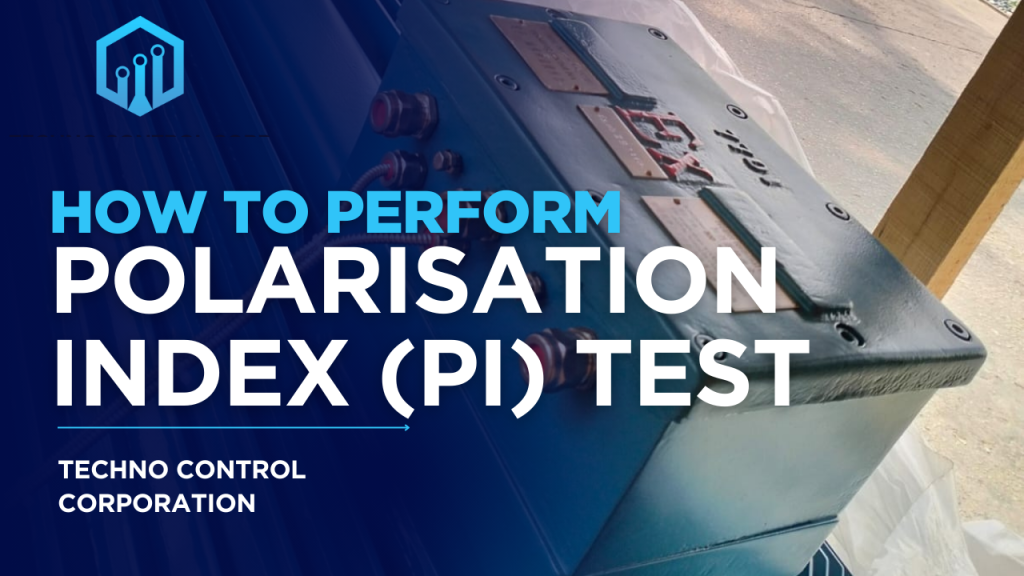
Polarization Index (PI) Test – Techno Control Corp
Introduction
The Polarization Index (PI) Test is a critical insulation test used to assess the health of motor windings. It helps identify insulation degradation caused by moisture, contamination, or aging, preventing costly failures.
This article will explain the importance, procedure, and benefits of the PI test and how it enhances motor reliability.
Why Is the Polarization Index (PI) Test Important?
Unlike a simple Insulation Resistance (IR) Test, the PI test provides a more accurate long-term evaluation of insulation quality. The PI test is essential for:
- Detecting insulation deterioration and contamination
- Identifying moisture absorption in windings
- Predicting insulation aging and failure risks
- Ensuring compliance with IEEE 43-2013 standards
A low PI value indicates that the motor insulation is weak, which could lead to:
- Short circuits
- Breakdowns
- Motor failure
How to Perform a Polarization Index (PI) Test?
Equipment Needed:
- Megohmmeter (Insulation Tester) with timed resistance measurement
- Proper safety gear
- Motor disconnected from power supply
Step-by-Step Procedure:
- Prepare the Motor:
- Ensure the motor is completely disconnected from the power supply.
- Remove any external wiring connected to the winding terminals.
- Set Up the Megohmmeter:
- Connect the positive lead to the motor winding terminal.
- Connect the negative lead to the motor frame (ground).
- Apply Test Voltage:
- Select the correct voltage according to IEEE 43-2013 standards:
- 500V for motors ≤ 1kV
- 1kV for motors 1kV – 5kV
- 5kV for motors ≥ 5kV
- Measure Insulation Resistance:
- Record the insulation resistance (IR) at 60 seconds (R60).
- Record the insulation resistance at 10 minutes (R600).
- Calculate the PI Value:
- PI = R600 / R60
- Compare the result with standard values.
Polarization Index (PI) Value Interpretation
| PI Value | Insulation Condition |
| < 1.0 | Poor (Insulation failure likely) |
| 1.0 – 1.5 | Questionable (Potential contamination or moisture) |
| 1.5 – 2.0 | Fair (May require maintenance) |
| 2.0 – 4.0 | Good (Healthy insulation) |
| > 4.0 | Excellent (Strong insulation) |
Benefits of the Polarization Index (PI) Test
✅ Detects Insulation Aging – Helps assess the long-term health of insulation.
✅ Identifies Moisture & Contamination – Finds issues that a simple IR test might miss.
✅ Ensures Motor Reliability – Prevents unexpected failures by tracking insulation degradation.
✅ Reduces Maintenance Costs – Allows predictive maintenance, avoiding costly repairs.
✅ Complies with IEEE Standards – Ensures industry-standard insulation testing.
Best Practices for PI Testing
- Always test in dry conditions to avoid false readings due to humidity.
- Compare PI values with previous tests to track insulation trends.
- If PI is low, consider insulation drying or varnish treatment.
- Perform the PI test as part of routine motor maintenance.
Conclusion
The Polarization Index (PI) Test is a powerful tool for diagnosing motor insulation health. It helps industries maintain motor efficiency, safety, and longevity.
By regularly performing PI tests, companies can prevent insulation failures, ensuring uninterrupted operations and cost savings.
